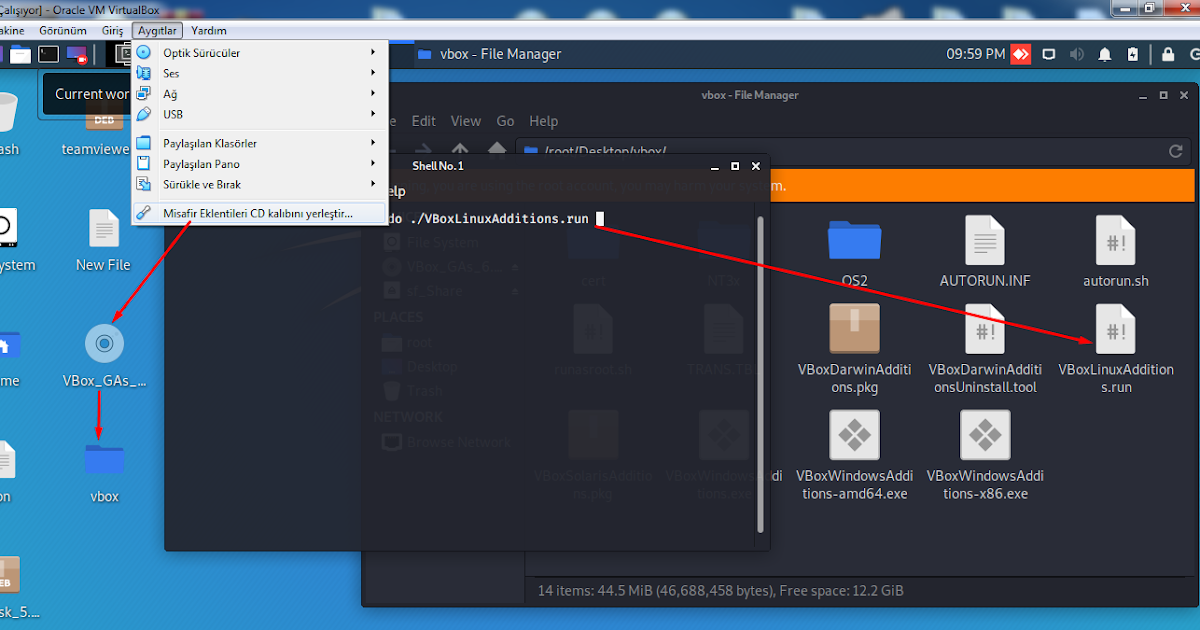
- Virtualbox shared folder permission denied how to#
- Virtualbox shared folder permission denied serial number#
- Virtualbox shared folder permission denied driver#
- Virtualbox shared folder permission denied Patch#
- Virtualbox shared folder permission denied windows#
More details can be found in the upstream documentation. This can also be performed via the GUI by clicking Settings -> Network -> Advanced (drop down) -> Port Forwarding. Adjust accordingly, then reboot the virtual machine.

The second number ( 22) will be the port on the guest machine. The first number ( 2222) will be the port on the host machine. User $ VBoxManage modifyvm "VM name" -natpf1 "guestssh,tcp,2222,22"īe sure to replace "VM name" with the proper name of the guest virtual machine. Modern VirtualBox emulates VMWare SVGA by default for Linux machines.
Virtualbox shared folder permission denied serial number#
According to the VirtualBox docs, this works because auto-resizing in Linux guests is induced in part by changing the serial number of the simulated monitor, which can't be done under VMSVGA. If it's set to VMSVGA, try changing it to VBoxSVGA while the guest is powered off. If the Guest Additions are installed correctly, the shared clipboard is working, etc., but the display can't be resized, open the VM's settings in the host-side VirtualBox Manager and look at Display → Graphics Controller. v, -verbose increases logging verbosity level d, -nodaemon continues running as a system service f, -foreground run in the foreground (no daemonizing) vmsvga starts VMSVGA dynamic resizing for x11/Wayland guests
Virtualbox shared folder permission denied windows#
seamless starts the seamless windows service checkhostversion starts the host version notifier service draganddrop starts the drag and drop service clipboard starts the shared clipboard service Starts the VirtualBox DRM/X Window System guest services. Usage: VBoxClient -clipboard|-draganddrop|-checkhostversion|-seamless|-vmsvga Resizing doesn't workĭue to the limitations of the VMSVGA described below, a daemon needs to be started in your X11 session for Guest resizing to work.
Virtualbox shared folder permission denied how to#
To install other Linux distributions as guest operating systems please refer to the distribution's documentation on how to install the drivers needed by VirtualBox or consult the official VirtualBox documentation. To install the Guest Additions, invoke the following command on the Gentoo guest system: EHCI HCD (USB 2.0) support Guest Additions Intel/SiS/nVidia/AMD/ALi AC97 Controller Map the console to the primary display device Enable framebuffer console under vmwgfx by default
Virtualbox shared folder permission denied driver#
Enable legacy fbdev support for your modesetting driver Direct Rendering Manager (XFree86 4.1.0 and higher DRI support) -> Intel(R) PRO/1000 Gigabit Ethernet support Intel ESB, ICH, PIIX3, PIIX4 PATA/SATA support ATA SFF support (for legacy IDE and PATA) Serial ATA and Parallel ATA drivers (libata) ->

KERNEL Support for VirtualBox hardware Device Drivers ->
Virtualbox shared folder permission denied Patch#
It is recommended to enable per package instead of globallyīuild VBoxVolInfo that needs devicemapper from sys-fs/lvm2.Īdd support for PAM (Pluggable Authentication Modules)DANGEROUS to arbitrarily flipĪpply patch needed for pax enabled kernels.Įnable precompiled header support for faster compilation at the expense of disk space and memory (>=sys-devel/gcc-3.4 only)Īdd optional support/bindings for the Python languageĪdd support for the Qt 5 application and UI frameworkĪdd support for Simple Direct Layer (media library)Ĭontrols installation of special USB udev rules.īuild and install the VirtualBox webserviceĮnable VNC (remote desktop viewer) support If you want to get meaningful backtraces see Īdd extra documentation (API, Javadoc, etc). VirtualBox host requires following kernel configuration options:Īdd support for media-libs/alsa-lib (Advanced Linux Sound Architecture)Įnable extra debug codepaths, like asserts and extra output. These drivers provide smoother operation with the Host operating system compared to the standard drivers installed by the Guest operating system. Possible alternative operating systems include Microsoft Windows, Solaris, BSD, Debian, Ubuntu, etc.ĭrivers for the guest operating system. The operating system to be installed or currently installed inside the VirtualBox emulation environment. For Gentoo users the host operating system would be Gentoo Linux Most likely the physical hardware present in the room.


 0 kommentar(er)
0 kommentar(er)
